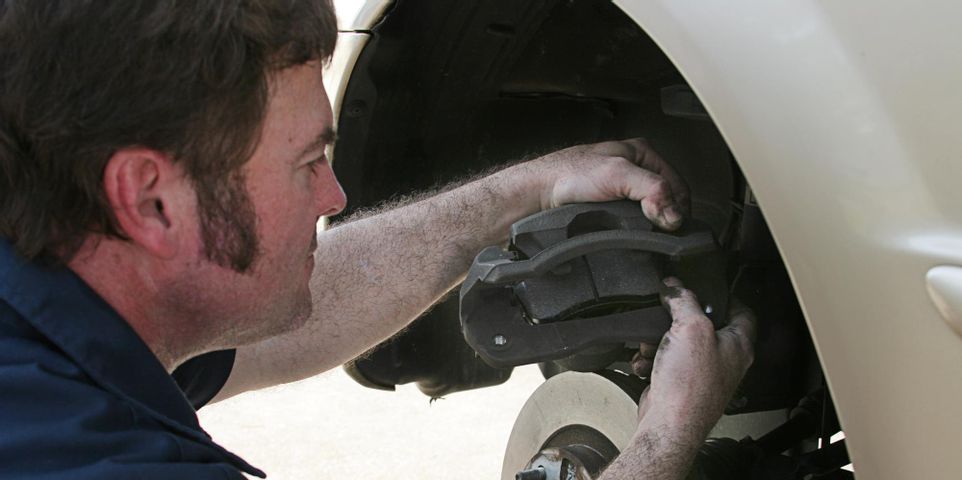
Your brakes are absolutely essential to the safety of you and your car. However, like any other vehicular component, brakes can develop issues over time that need to be professionally addressed. Here is more information about brake bleeding, and why it may be recommended after a brake inspection.
What Is Brake Bleeding?
Worn brake pads can allow air to enter the hydraulic brake fluid and become present in the brake line. As a result, your brakes could feel spongy or less responsive. Leaks in the brake lines can also result in air interfering with your car’s braking system.
Brake bleeding is recommended after a brake inspection, and involves releasing any air that may be present in the hydraulic brake line. After a bleed screw is released behind your brakes with a bleeder wrench, a flexible section of tubing is placed over the bleeder screw. Then a jar filled with brake fluid will be used to cover the end of the hose. Next, a person inside the vehicle will pump the brakes while the bleeder screw is opened.
If there is air in the line, it will be released into the jar of brake fluid, and the screws will be retightened. The process is performed for each wheel with a brake.
How Often Does Brake Bleeding Need to Be Done?
 To keep your car safe and functional, your brakes should be bled every two to four years. Brake bleeding should only be done by a professional who understands how to perform brake inspections and repairs. This is because the process can be complex and the fluid needs to be disposed of properly since it’s toxic and can harm the environment.
To keep your car safe and functional, your brakes should be bled every two to four years. Brake bleeding should only be done by a professional who understands how to perform brake inspections and repairs. This is because the process can be complex and the fluid needs to be disposed of properly since it’s toxic and can harm the environment.
Whether your brakes have been acting strange lately or you suspect that you need to have your brakes bled, turn to Quick Lane at Jack Kain Ford for help. In addition to offering everything from tire inspections to wheel alignments, these trusted professionals can also help with battery tests, oil changes, and routine car tuneups. To find out more about how they can help, visit their website or give their office a call at (877) 837-1796.
About the Business
Have a question? Ask the experts!
Send your question

